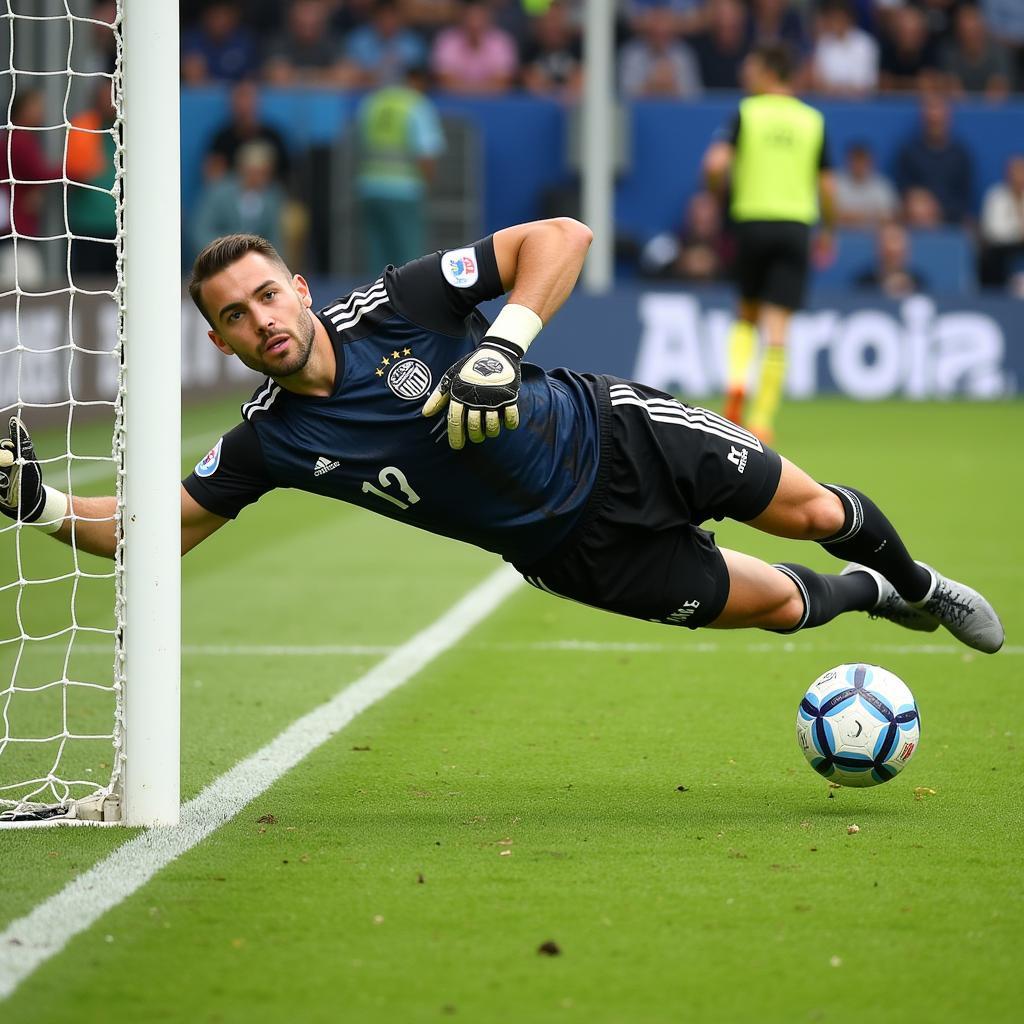Understanding Goalkeeper Gloves: A Striker’s Perspective
October 14, 2024As a striker who lives for the thrill of finding the back of the net, I’m always fascinated by the constant battle between attack and defense. And at the heart of that defensive line stands the goalkeeper, a lone warrior facing down my thunderous strikes. One crucial weapon in their arsenal? Goalkeeper gloves. Now, you might think gloves are just gloves, but let me tell you, they’re a whole different ball game.
 Close-up of goalkeeper gloves
Close-up of goalkeeper gloves
The right pair of gloves can be the difference between a spectacular save and a goal conceded. The technology that goes into these gloves is impressive, designed to provide grip, protection, and flexibility.
The Science Behind the Grip
Ever wonder how goalkeepers manage to get their hands around those fast-moving shots? It’s all thanks to the specialized latex palms. This isn’t your average rubber; it’s engineered to provide maximum friction, allowing goalkeepers to catch and hold onto the ball even at high speeds.
 Goalkeeper diving to make a save
Goalkeeper diving to make a save
The thickness of the latex also plays a crucial role. Thicker latex provides better durability and cushioning, especially important when facing powerful shots. However, it can sometimes compromise sensitivity and ball control. Thinner latex, on the other hand, offers enhanced feel and grip but might wear out faster.
Protection is Key
Goalkeepers put their bodies on the line every time they step onto the pitch, and their hands are often the first line of defense. That’s where the padding on the back of the gloves comes in. High-density foam padding absorbs impact, reducing the risk of injury from powerful shots. Some gloves even feature spines or finger protection systems to prevent hyperextension.
Flexibility for Agility
Goalkeeping isn’t just about stopping shots; it’s about reacting quickly and making those split-second decisions. That’s why flexibility is paramount. Look for gloves with breathable materials and flexible cuts that allow for a natural range of motion. A snug fit is crucial, ensuring the gloves move as an extension of the goalkeeper’s hands.
Different Gloves for Different Conditions
Just like strikers might choose different boots for varying playing surfaces, goalkeepers need gloves tailored to specific conditions.
- Dry Weather Gloves: Typically feature smooth latex palms for maximum grip on dry balls.
- Wet Weather Gloves: Utilize specialized latex formulations designed to repel water and maintain grip in rainy conditions.
- Training Gloves: More durable and affordable, made for regular practice sessions.
 Different types of goalkeeper gloves
Different types of goalkeeper gloves
As a striker, I appreciate the dedication and skill it takes to be a top-class goalkeeper. The next time you watch a match, pay attention to those gloved hands – they’re a testament to the technology and athleticism that make the beautiful game so captivating.